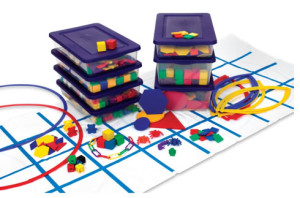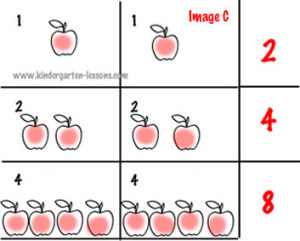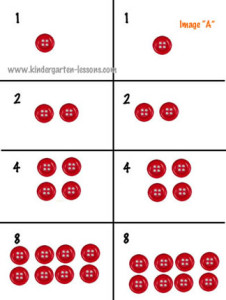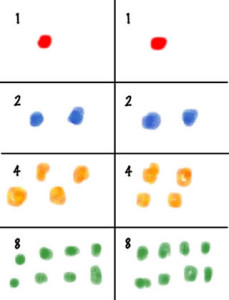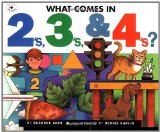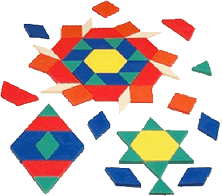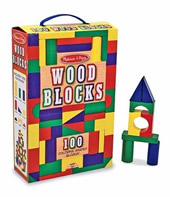Teaching doubles with a math and literature connection is a wonderful way to introduce the concept. Minnie’s Diner is a delightful and funny book about the five McFay brothers who are so tempted by the smells coming from the diner that they stop working and go inside for some food.
Each brother is bigger than the one before and orders “double” the food of the previous brother, saying, “…make it a double”.
The story starts with Little Will ordering 1 soup, 1 salad, 1 sandwich, some fries and 1 of Minnie’s hot cherry pies and by the time the oldest brother Dill orders, he has 16 of everything. Papa McFay turns out to be a small fellow and he gets 32 of everything!
Minnie’s Diner has delightful illustrations that clearly show the amount of food getting larger and larger as each brother orders. Use the book for teaching doubles. It will benefit the number sense of even a young child and will suit children 5-8.
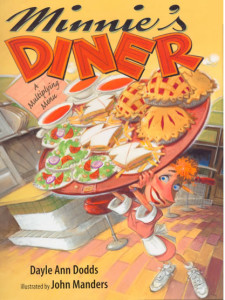
Teaching doubles with Minnie’s Diner – purchase the book here…
Teaching Doubles – the Math and Literature Connection
- Read the story to the students a few times
- Use the book to show what the littlest brother ate (1 of everything) and then what the next brother ate (2 of everything). Say the bigger brother ate “double” what the little brother ate.
- Draw a quick graph on chart paper or on a whiteboard like the one below (Image C).
- Show one apple and one apple. Point out that the pictures are the same and the numbers are the same.
- Start with row one. One apple plus one apple equals 2 apples.
- Print the number 2 on the same row (see image C).
- Do the same with 2 apples and 2 apples and again for 4 apples and 4 apples.
- Continue with larger doubles if your students are ready.
Teaching Doubles with Play
At the preschool and kindergarten age it is not important that the children memorize doubles (1 + 1 = 2, 2 + 2 = 4, 4+ 4 = 8…), but it is valuable to give students play experiences with blocks, buttons or counters in order to build their number sense of what the term, doubles, mean.
When a child has many opportunities to play with numbers they build an intuitive understanding of numbers, called number sense. Often children enter kindergarten counting to 10 or more but cannot demonstrate what ”6″ or “8” mean as they have not had enough practice with real objects and numbers.
Allowing students many experiences and lots of time to play with a mat or laminated card like the one in image A, with buttons or other counters, will build their understanding of the term “doubles”.
- The “concrete stage” occurs when children use only real objects to demonstrate an idea, in this case “doubles”.
- Give students laminated 8.5″ x 11″ card mats with numbers on them, similar to image “A”
- Provide counters or buttons to allow the kids experiences creating doubles.
Recording Results
The “representational, connecting or pictorial stage” happens when the kids work with concrete objects as well as drawing pictures or diagrams to record their results. After the students have had experiences like the one above, placing real objects on a doubles mat, they will be ready for the next step.
- Provide each student with a blank worksheet with the numbers printed on it, see image below, as well as felt markers.
- Have children put dots of paint or circles with felt markers to match the numbers.
- Ask them to use a different color for each row.
- If your students are able, have them count each row.
- If your students have mastered the concept of addition, add a third column to your worksheet and have them record the addition equations as well, 1 + 1 = 2, 2 + 2 +4, etc.
Teaching doubles with everyday things
Doubles are all around us. Point out or collect some of the following to help children become familiar with them:
- eyes 2 + 2
- tricycle wheels, Story book characters,
3 little pigs, 3 + 3 - toy car wheels 4 + 4
- fingers 5 + 5
- egg cartons 6 + 6
Another book for introducing doubles.
Try the following math equipment for teaching doubles and other math concepts…
Pattern blocks are my number one winner as far as using a math toy or manipulative for more than one purpose. They are versatile and come in six colors and shapes: yellow hexagons, green triangles, blue diamond shaped rhombus, red trapezoids, orange squares and a smaller beige rhombus.
Pattern blocks can be used to teach every thing from number sense, graphing, tessellation, fractions and more.
More pattern block toys and equipment …
Colored wooden blocks come in many shapes and are invaluable for teaching geometry, symmetry, number sense, counting, patterns, and more.
When children play with them they practice problem solving and planning, gain an understanding of balance and gravity and development social skills.
Buy a complete set of equipment for teaching math….
Buy a complete set of math equipment to help your students understand math concepts…